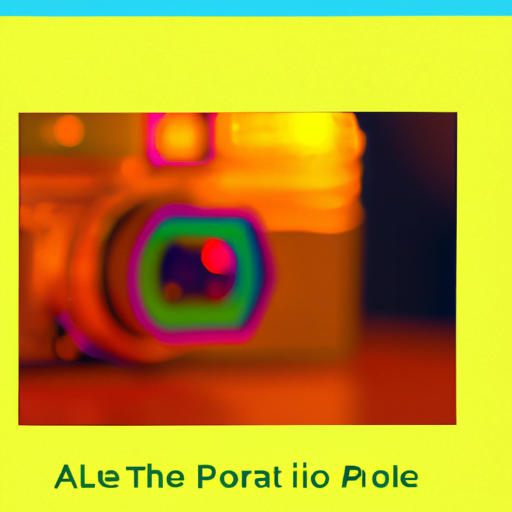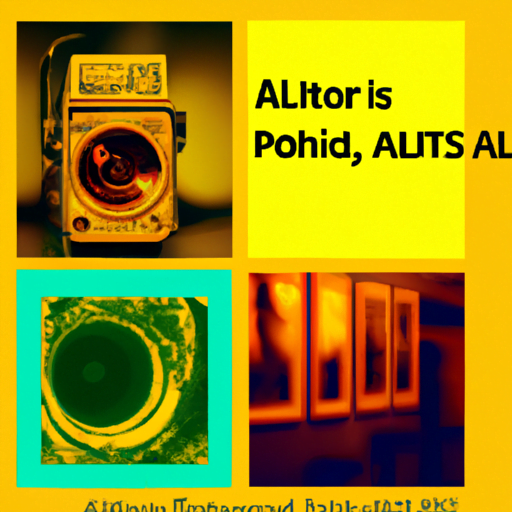
-
Table of Contents
The Future of AI-Generated Album Covers and Artwork

Artificial Intelligence (AI) has been making significant strides in various industries, and the world of art is no exception. From creating paintings to composing music, AI has proven its ability to mimic human creativity. One area where AI is gaining traction is in the generation of album covers and artwork. In this article, we will explore the future of AI-generated album covers and artwork, examining the benefits, challenges, and potential impact on the creative industry.
The Rise of AI in Art
AI has come a long way in recent years, thanks to advancements in machine learning and deep neural networks. These technologies enable AI systems to analyze vast amounts of data and learn patterns, allowing them to generate original content that resembles human-created art. The use of AI in art has sparked both excitement and controversy, with proponents praising its potential to enhance creativity and critics expressing concerns about the loss of human touch.
The Benefits of AI-Generated Album Covers
AI-generated album covers offer several advantages over traditional methods of artwork creation:
- Efficiency: AI can generate album covers at a much faster rate than human artists. This speed is particularly beneficial for musicians who release albums frequently or need artwork for promotional materials.
- Cost-Effectiveness: Hiring a human artist to create custom album artwork can be expensive. AI-generated artwork eliminates the need for costly commissions, making it a more affordable option for independent musicians or those on a tight budget.
- Unlimited Creativity: AI algorithms can produce an infinite number of unique designs, allowing musicians to explore a wide range of visual styles and concepts. This opens up new possibilities for experimentation and artistic expression.
- Consistency: AI-generated artwork can maintain a consistent visual theme across an artist’s discography, creating a cohesive brand identity. This consistency can help establish recognition and familiarity among fans.
AI in Practice: Case Studies
Several notable examples demonstrate the potential of AI-generated album covers:
1. Taryn Southern’s “I AM AI” Album
In 2018, musician Taryn Southern collaborated with Amper Music, an AI music composition platform, to create her album “I AM AI.” The album cover, generated by AI, features a vibrant and abstract design that captures the essence of the music. This collaboration showcased the ability of AI to contribute to the entire creative process, from music composition to visual representation.
2. OpenAI’s “DALL·E” Project
OpenAI, a leading AI research organization, introduced the “DALL·E” project in 2021. DALL·E is an AI model capable of generating images from textual descriptions. While not specifically focused on album covers, this project demonstrates the potential for AI to create highly detailed and imaginative visuals based on textual input. Musicians could potentially describe their desired album cover in words, and AI could bring it to life.
Challenges and Limitations
Despite the numerous benefits, AI-generated album covers also face challenges and limitations:
- Lack of Human Intuition: AI algorithms lack the intuitive understanding and emotional depth that human artists bring to their work. This can result in artwork that feels technically impressive but lacks the soul and emotional resonance of human-created art.
- Legal and Ethical Considerations: AI-generated artwork raises questions about copyright and intellectual property. Who owns the rights to AI-generated album covers? Should AI be considered a tool or a co-creator? These legal and ethical considerations need to be addressed to ensure fair and transparent practices.
- Overreliance on Algorithms: Relying too heavily on AI-generated artwork may lead to a homogenization of visual styles. The uniqueness and diversity of human artistic expression could be compromised if AI becomes the dominant force in creating album covers.
The Impact on the Creative Industry
The rise of AI-generated album covers and artwork will undoubtedly have a significant impact on the creative industry:
- Redefined Roles: The role of artists may shift from solely creating artwork to curating and guiding AI systems. Artists can leverage AI as a tool to enhance their creative process, allowing them to focus on higher-level concepts and ideas.
- New Collaborations: Musicians and artists can collaborate with AI systems, blurring the boundaries between human and machine creativity. This collaboration can lead to innovative and unexpected artistic outcomes.
- Emerging Business Models: The accessibility and affordability of AI-generated artwork may disrupt traditional business models in the art industry. Artists and musicians can explore new revenue streams, such as selling AI-generated prints or licensing AI algorithms.
Summary
The future of AI-generated album covers and artwork holds immense potential for the creative industry. While AI offers benefits such as efficiency, cost-effectiveness, unlimited creativity, and consistency, it also faces challenges related to human intuition, legal considerations, and the potential homogenization of artistic expression. However, the impact on the creative industry is undeniable, with redefined roles, new collaborations, and emerging business models on the horizon. As AI continues to evolve, it will be crucial to strike a balance between human creativity and the capabilities of AI systems to ensure a vibrant and diverse artistic landscape.
